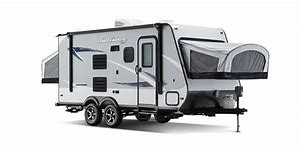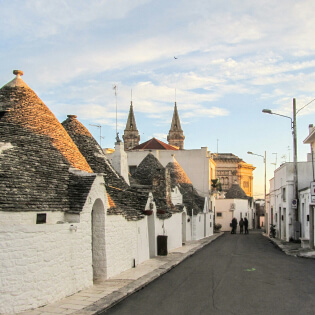Things to consider when purchasing a RV:
- What type of vacations you plan on taking?
- How often do you plan on using your RV?
- How many people do you plan on normally taking with you?
- Big Tip: Unless you are pulling a trailer you will need a tow car or you will have to disconnect everything whenever you go sightseeing, eat at a restaurant, or go to the store. A lot of people do not consider this when they are looking at Class B and C motorhomes.
Plan on using State or Federal Parks? Most State and Federal RV parks were designed when largest motorhomes available was 36-38 ft. Therefore, there are few spots parking spots for 40 ft or larger RV in most State and Federal parks.
If on your vacations, you spend most of your time outdoors and only use your RV for a place to cook and sleep then you will want to look at some of the smaller RV on the market. If you drive-ability is a major issue, then the Class B or smaller Class C RVs may be a good fit.
Class A motorhomes are normally designed for two people they have a single double bed and a sleeper sofa. Class A and fifth-wheels normally have the most luxurious living spaces.
Class C motorhomes have more sleeping areas than all other class motorhomes of comparable size.
What is a Class A Motorhome?
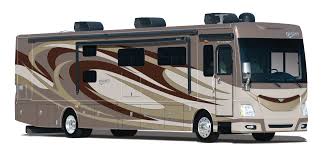
Class A motorhomes are normally constructed on a commercial truck or bus chassis, in a few cases a specially designed motor vehicle chassis is used. Class A motorhomes resembles a bus in design and have a flat or vertical front-end with large windows. Most have slide-outs that add significantly to the interior when parked. They come in both diesel and gas powered. Sizes run from 25 to over 44 feet.
Larger than 40 feet may require a special drivers license in some states. This law is seldom enforced but will be an issue if you are in an accident. So check your state laws before purchasing anything over 40 feet in length.
Class A Motorhomes are normally designed for two people in style with accommodations for 2 more. They have a single double bed room and will normally have a sleeper sofa and/or a dinette that makes into a bed. Their large bathroom and shower facilities as well as the luxurious living rooms make them truly “Motorhomes”.
What is a Class B Motorhome?
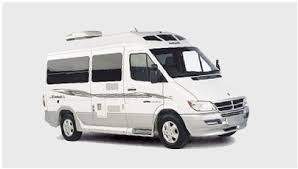
Class B motorhomes are built on several different chassis depending on manufacturer. They come with both driver and passenger side doors and may have one additional door for direct access into the living space.
California requires Class B motorhomes to have at least four of the following six items built in: sink or shower, refrigerator, cooking system, 110v electrical system, AC unit or heater, toilet. The larger units will have all of these and may also have slide-outs.
Class B have the advantage of driver height in that it is close to what you experience when driving a normal automobile or SUV. Their bathroom and shower facilities, if available at all, are extremely limited. They have greater maneuverability, have less maintenance, higher fuel efficiency, easier storage than most other motorhomes.
If you’re interested in primitive camping or using your motorhome for hiking, climbing and spending a great deal of time outdoors, a Class B should suffice. I think of them as one step above a tent.
What is a Class C Motorhome?
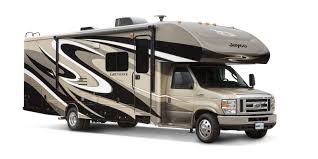
They resemble a pickup with camper. Almost all Class C motorhomes have a cab-over space which is usually a second double bed. Class C motorhome are built on a truck platform and have both diver and passenger side doors, an additional door into the living spaces. They have and engine in the front connected by a driveshaft to a rear axle with dual-mounted rear wheels. The larger units may also have slide-outs. These RV’s range in size from 18 to 40 feet. when you get close to or above 30 feet there is not a lot of difference between them and a Class A.
Class C motorhomes have the advantage of driver height in that it is close to what you experience when driving a normal automobile or SUV.
These are a significant step up from Class B motorhomes and have better sleeping, dining, food preparation and living room areas. If you stay below or around 24ft the drivability remains close to that of an automobile.
Some manufactures market Class B-C and B+ Motorhome but as far as most states are concerned these are not a valid classification. It is mostly a marketing gimmick used when a Class B has a stand-up shower. It was something that sales people started as a way of uniquely identifying large Class B motorhome.
What is a Fifth-wheel?
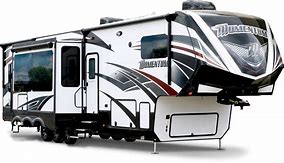
Fifth-wheel RV’s get their name from the hitch design. A heave duty pickup truck is required to pull these trailers.
Fifth-wheel trailers have a goose-neck hitch that hooks to the bed of a full-size truck similar to the trailer attachment systems on tractor-trailers. Fifth-wheel hitches are made to pull heavy loads without problems.
Fifth-wheel trailers are typically larger and heavier than other travel trailers putting a much bigger demands on the tow vehicle. You will normally require a truck rated to tow up to 9,000 pounds. For safety make sure your tow vehicle has the optional towing package that includes a transmission and oil cooler. These have the accommodations found in Class A motorhomes often with the additional benefit of more sleeping areas and the ability to have passengers ride in the trailer provided you have an audio connection to the driver.
What are Travel/Camping Trailers?
RV towed behind a pickup truck, SUV, car or minivan using a bumper or frame hitch. They come in many size and configurations that will meet any ones needs from popup tents to fully self-contained RV use. These are normally the least expensive for size that you can purchase. They also provide more interior space than motorhomes of the same size because they do not have the 6 to 8 feet required for engine and driver. They come in many sub-types such as Toy Haulers, Pop-ups and Tear-drop trailers models.
Travel Trailer
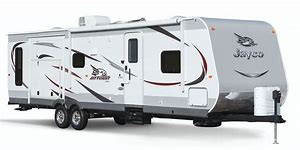
Toy Hauler
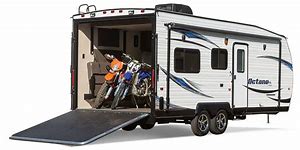
Sleeper Trailer
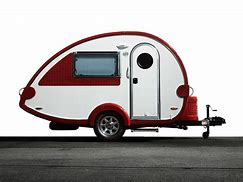
Tent Trailer
